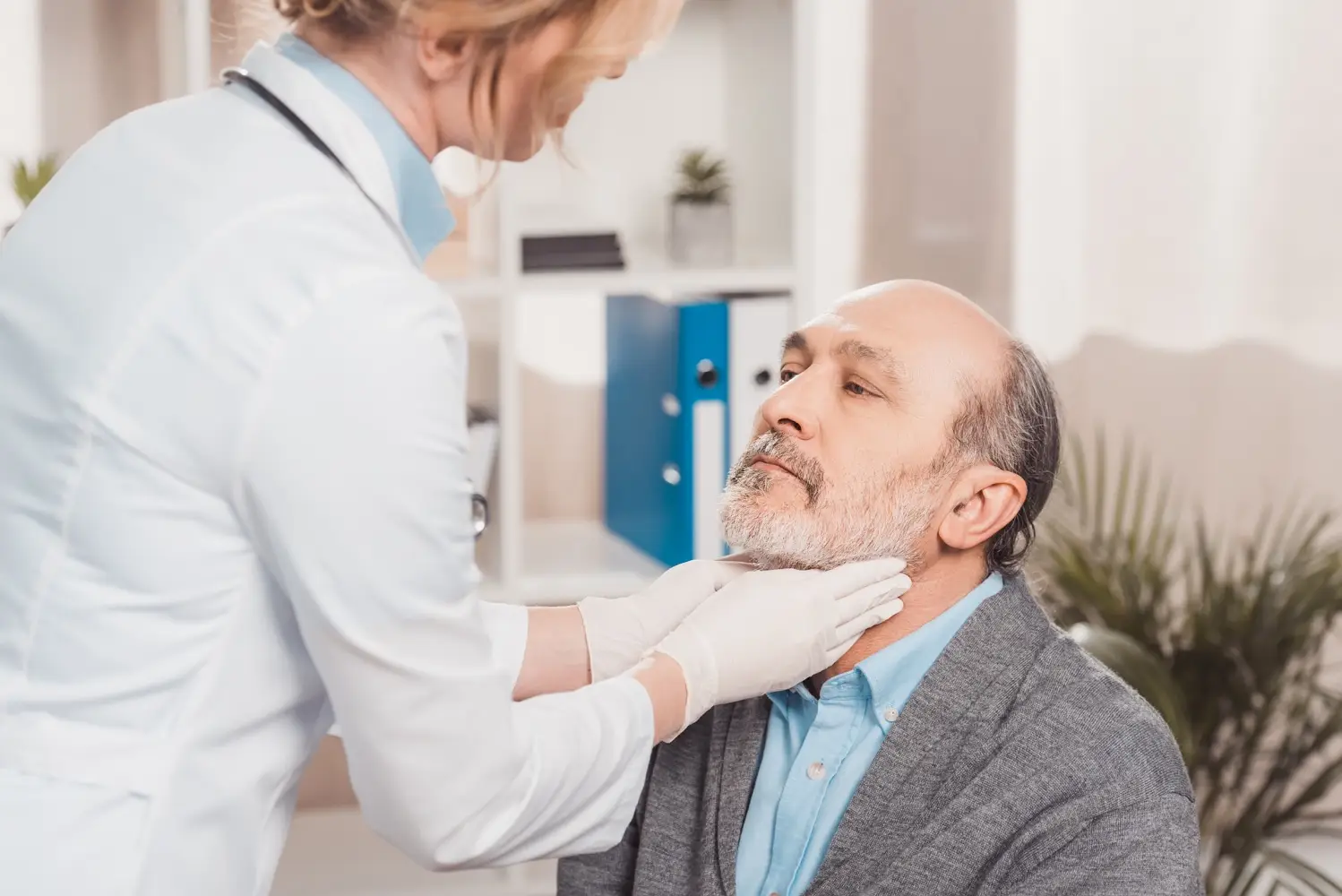Otorhinolaryngology, also known as ear, nose, and throat, is the medical branch that examines diseases related to areas such as the ear, nose, throat, head, and neck. Otolaryngologists plan and implement diagnosis and treatment for hearing and speech disorders, inner ear and balance problems, ear infections, tinnitus, nose and sinus problems, throat, larynx, and respiratory tract problems. They can apply diagnostic methods such as endoscopy, X-ray, computed tomography, magnetic resonance, as well as drug treatments, maneuver treatments for dizziness, and surgical treatments when necessary. Since ear, nose, and throat diseases are closely related to many different systems of the body due to their causes or symptoms, physicians from different specialties can work together as a team in the diagnosis and treatment process of diseases.
Snoring

Snoring occurs due to the tremors that occur in the throat during difficult breathing, as the person cannot breathe easily due to the partial closure of the respiratory tract. Snoring causes a great deterioration in sleep quality. If it is observed that breathing is experienced along with snoring during sleep, the relationship of this situation with sleep apnea should be considered. There may be many different problems with snoring. Although snoring is mostly caused by the structures of the nose, mouth, and throat, it can also occur for different reasons such as weight gain, fatigue, allergies, insomnia, swelling of the tonsils, colds, and pregnancy.
However, in some cases, snoring may occur because of other serious problems such as underlying high blood pressure and heart diseases. The problem of snoring can cause symptoms such as sore throat, weakness, palpitations, insomnia, and nervousness. People may also experience sleep problems due to snoring. The diagnosis of snoring first begins when patients or the people around them detect snoring and tell the physician their disease story. Afterward, computerized tomography and magnetic resonance imaging techniques can be used to evaluate the structural smoothness of areas with high snoring, such as the nose, throat, and mouth, in line with the physician’s opinion. To detect the problems that may occur in the respiratory tract, the physician can use the imaging method that allows observing the respiratory tract through a small camera called endoscopy. In patients with suspected sleep apnea, the patient is hosted in the sleep laboratories throughout the night and the patient’s heart rate, breathing pattern, and brain waves are examined by the physician.
When the underlying cause of snoring is determined, a treatment procedure for the source of the problem is created by the physician. If the source of the problem is another disease, it is expected that snoring will end with the treatment of that disease. However, some types of snoring may not end even if other health problems detected are resolved. In such cases, with the guidance of a physician, patients try to keep their snoring under control by making lifestyle changes, weight control, and sleep pattern adjustments. Although snoring may seem like a simple and insignificant problem, it is very important to perform the necessary health screenings, as it may be the result of serious health problems behind it. In this way, patients can find solutions to more serious health problems or increase their comfort by ending their snoring problems.
Dizziness (Vertigo)

Vertigo is a disease that is characterized by dizziness and causes intense loss of balance due to movement in the living person. Vertigo is divided into two groups in terms of its features. Among these, central vertigo is vertigo caused by diseases such as injuries, hemorrhages, and tumors that occur in the system formed by our organs, called the central nervous system, such as the brain, brain stem, and cerebellum. Peripheral vertigo, which is another group, has semicircular canals that play a major role in maintaining our balance in the inner ear, which is the deepest part of the ear cavity. In this region, there are ear crystals called utricle and saccule, which are also involved in our sense of balance.
For various reasons, patients experience intense dizziness when these crystals cannot be separated from their place and positioned correctly. Every movement causes the crystals to move, and the dizziness due to the movement intensifies. In general, dizziness can last as short as seconds or hours and can occur in attacks regardless of the patient’s movements. Vertigo may occur as a symptom of an underlying disease, and symptoms such as severe loss of balance, darkening in the eyes, nausea, pressure in the ear, decreased blood pressure, and tinnitus may occur because of vertigo. Symptoms resulting from vertigo may cause the patient to fall at risk, and in some cases, the patient may lose their judgment during an attack.
Patients who experience such symptoms should apply to the hospital as soon as possible both to protect themselves from the risks of dizziness and to detect the underlying diseases if any. Most cases of vertigo occur due to inner ear problems. To detect this problem, some clinical tests are applied to the patient by the physician. Apart from these tests, involuntary eye movements during dizziness can be detected with the help of an electronystagmography device, and the source of the problem in the inner ear can be determined in line with these movements. The physician may refer to imaging methods such as computed tomography and magnetic resonance imaging for the detection of other problems that may cause vertigo, especially for examinations for central vertigo.
When the source of the problem causing vertigo is determined, the appropriate treatment procedure is created by the physician. If the cause of the vertigo is the displacement of the crystals in the inner ear, the physician applies treatment to reposition the crystals. Apart from this, if vertigo has occurred due to another disease such as a tumor, injury, bleeding, or infection, the physician may also refer to the appropriate drug therapy or surgical treatment for the disease. Vertigo is a disease that has a solution and thanks to the correct diagnosis and treatment, patients can regain their health.
Sinusitis

In our head, around our nasal passages, there are air spaces called sinuses, which serve to warm the air we breathe, adjust the acoustic quality of our voice, and reduce the weight of our head. The inside of the sinuses is lined with a moist surface called the mucous membrane. The mucous membrane is constantly secreting mucus to maintain its moisture content. Sinusitis is an infection of the mucosa in the sinus due to bacteria or viruses. Inflammation caused by the structure of the sinuses or the disorders in the patient’s nasal structure cannot drain into the nasal canal from the sinus cavities. For this reason, the sinus cavities may fill with inflammation and the infection may intensify.
Disorders in the structure of the nose, sports such as diving, and swimming, which may cause bacteria and viruses to enter the sinuses, smoking and dental infections increase the risk of sinusitis and complicate the treatment of sinusitis. Sinusitis patients have symptoms such as runny nose for more than a week, nasal discharge and related cough, fever, bad breath, bad smell or decreased smell, pain and heaviness around the nose and eyes, pain with eye movements, headache, change in voice tone. The person with these symptoms should apply to the hospital so that the infection can be controlled before it progresses further. For the diagnosis of sinusitis, the physician can make some clinical evaluations for the disease. Apart from these clinical tests, it can examine nasal disorders and sinus occupancy with imaging methods such as X-ray and computed tomography and can examine infection through nasal culture and blood tests. In line with the evaluations made in the treatment of sinusitis, if the source of the sinusitis is determined to be bacterial, antibiotic treatment can be started.
Painkillers for the pain that may occur in the face area caused by the occlusion in the sinuses and nasal sprays and washing apparatus to help the inflammation in the sinuses drain into the nasal cavity can be recommended. Medication can be started for symptoms such as fever and cough accompanying sinusitis due to infection. If an allergic condition is detected at the source of the sinusitis, anti-allergic drugs can be used, but if the sinusitis becomes chronic and recurs, the patient can be referred to an immunologist. Surgical treatment can be applied for chronic and persistently recurring sinusitis that cannot be controlled and causes intense infection. However, even after surgical treatments, it may be necessary to continue drug treatments to prevent the recurrence of sinusitis. Even chronic sinusitis patients benefit greatly from such treatment interventions. Even if it recurs in some patients, sinusitis is a controllable and curable disease thanks to current treatment methods.